How to not be fooled by healthy looking food
Eating healthy has become really popular lately, and a lot of food brands are taking advantage of our desire to eat well. Boxes promising that what’s inside is healthy for your heart. Farmers pledging not to use some chemical you’ve never heard of. How do you look past the hype though, and see if it’s healthy for you and your family, or if it’s actually hazardous?
Several years ago I didn’t know much about healthy food. I knew that I needed to eat my veggies, organic was supposedly better, and I probably shouldn’t drink coke everyday. I’ve come a long way since then. Now I have raw milk in my fridge, pesticide free and locally grown produce on the counter, and some coconut sugar in the pantry.
Confusing labels
As much as we try to eat local, unprocessed and real foods, it’s still a journey. If you’re trying to eat better, then it’s easy to be swayed by the colorful food labels. They say things like “all natural” “heart healthy,” “cage free,” and “non-gmo,” but what do they really mean, and do they just have profits in mind?
I’ll be breaking down the packaging for you, from the ingredients label, to the colors they choose. As a journalism major, I’ve studied marketing and how businesses get consumers to believe what they want them to, no matter what they’re selling.
Don’t be duped by “greenwashing”
And as someone who runs an organic and non-toxic bodycare business, I’ve been privy to conversations with fellow product developers and chemists. They’ll often discuss how to “greenwash” products to make people think they’re healthy, even offering classes explaining how to fool customers.
People are getting these products because they’re hiding behind healthy looking packaging, and they think that they’re making a better choice for their family by buying these products.
Margarine gets a makeover
Ever since margarine replaced butter in American’s fridge during the ‘80s, it’s been touted as heart healthy. Today’s consumer’s need a little more convincing though, so they’ve revamped the packaging to make it look even healthier.
The colors on the package are green and yellow. Your mind associates these colors with grass, flowers and sunshine, tricking it into thinking this margarine is as healthy as the all natural outdoors.
The word “butter” is used all over the packaging because your brain is telling you that butter is better. Marketers know that “dairy free butter” sounds more appealing to you than “hydrogenated and rancid margarine”
Not really non-gmo
Non-gmo pledge. This is the WORST! A pledge means NOTHING! If a product is actually non-gmo it will have the non-gmo project seal verifying that it really is non-gmo. Anything else is a marketing gimmick.
And here they’re implying that you’ll have love in your life and feel fulfillment if you just use their fake butter.
They’re also highlighting the healthy Omega-3’s, but ignoring the fact that the product is full of inflammatory vegetable oils that are unbalanced with a high level of disease causing Omega-6’s.
Not so healthy ingredients
Here’s where the truth really comes out. Forget about the nutrition facts for a minute, and take a look at the ingredients. (Always, always, always check the ingredients!)
Canola and soybean oil – Vegetable oils are rancid, highly inflammatory, and can cause cancer, Alzheimer’s, arthritis and other inflammatory conditions. They’re also almost always GMO. Remember that Non- GMO pledge? This is why it means nothing. (source)
Palm oil – I actually use fair trade palm oil because it is a healthy fat. This stuff though isn’t fair trade certified, which means that it most likely comes from plantations who are wiping out entire species, decimating the rainforests, and even murdering the indigenous tribes of people that get in their way. This entertaining and eye opening video shows how bad it really is.
Artificial flavors – This could be any number of synthetic chemicals. They’re isolated and combined into a fake flavor made of who knows what. Definitely not good for you. Add to that the synthetic and harmful vitamins, emulsifiers and preservatives and you have one nasty product. (source)
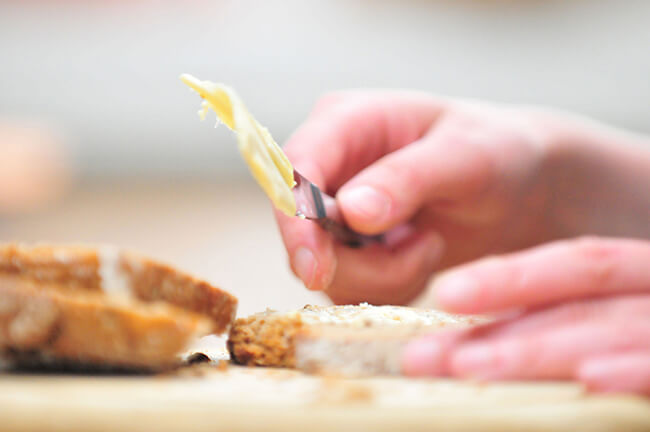
Buy this instead: Get local, grassfed butter and stay away from ALL margarine spreads. Even vegan margarine isn’t good for you. You can read more about vegan margarine, other vegan junk foods and why I’m no longer a vegan here.
If you can’t find local, then Kerrygold grasssfed butter is a good alternative that can be found at any grocery store. Real butter is full of bioavailable vitamins D, A and K2 for strong teeth and bones. This book is one of my favorites, and really delves into how good healthy, grassfed animal fats are.
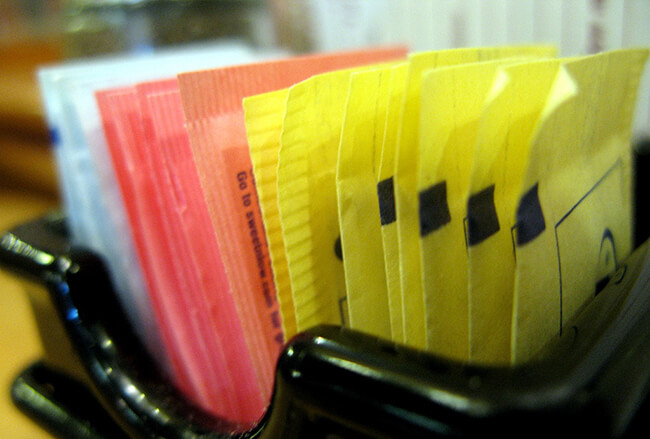
Hidden artificial sweeteners
Most people have already moved past buying artificial sweeteners like Splenda and aspartame in bulk, but they’re still hiding in many so called healthy foods. A fellow caregiver I work with told me how one of her clients used the little pink packets religiously…. He was also dying from a brain tumor the size of a grapefruit.
Children’s medicine (including all allergy meds), protein and veggie powders, flavored water, low fat yogurt and all sorts of things contain these artificial sweeteners. Please, I can’t tell you enough how important it is to look at the ingredients!!
Aspartame was originally a failed prescription drug that they decided to put in food, but only after the evidence showing it was dangerous was ignored. (source) It’s a neurotoxin that has been indicated in causing or worsening:
- alzheimer’s and dementia
- cancer
- memory loss
- heart problems
- Panic attacks
- Seizures
- Fibromyalgia
- Birth defects
- Parkinson’s disease ( actor Michael J. Foxx was renowned for downing loads of aspartame sweetened diet Pepsi, and he now has Parkinson’s.) (mercola, aspartame-most-dangerous-substance-added-to-food)
A friend of mine unknowingly ate aspartame sweetened desserts while pregnant, and her son now has learning disabilities and asthma.
Buy this instead: Check ingredients to make sure artificial sweeteners aren’t hiding in your food! To sweeten foods, use coconut sugar, raw honey (local if you can find it), pure maple syrup, minimally processed stevia, or rapadura cane sugar.
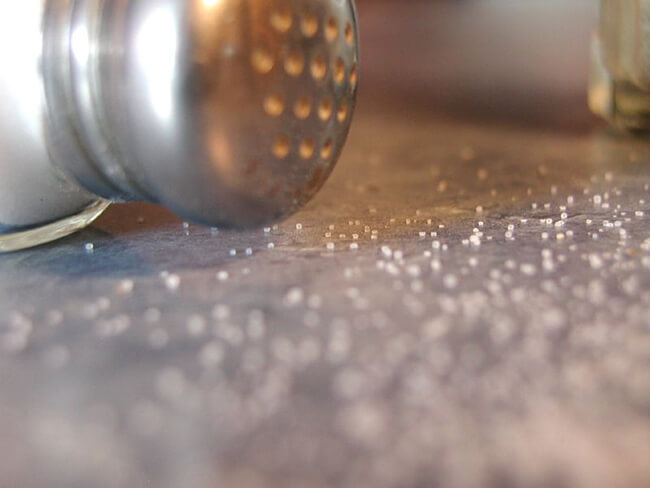
Iodized sea salt
I’ll readily admit that this is a product I bought for several years before I realized it wasn’t all it was cracked up to be. Most of us have heard that sea salt is better for us, so it seems like this would be a good choice. Real sea salt is unrefined and full of over 50 trace minerals our bodies need to function. This article on why real, unrefined sea salt is healthy for you (and table salt is poison) is a fantabulous read, if you want more info.
Regular table salt, even the iodized sea salt, is stripped of all it’s nutrition, making it similar to white sugar. It’s then bleached and anti-caking agents, fluoride, synthetic iodine and aluminum derivatives are usually added.
Buy this instead: I buy unrefined, nutrient dense, light grey Celtic sea salt or Redmond’s Real Salt. Pink Himalayan sea salt is also an excellent choice.
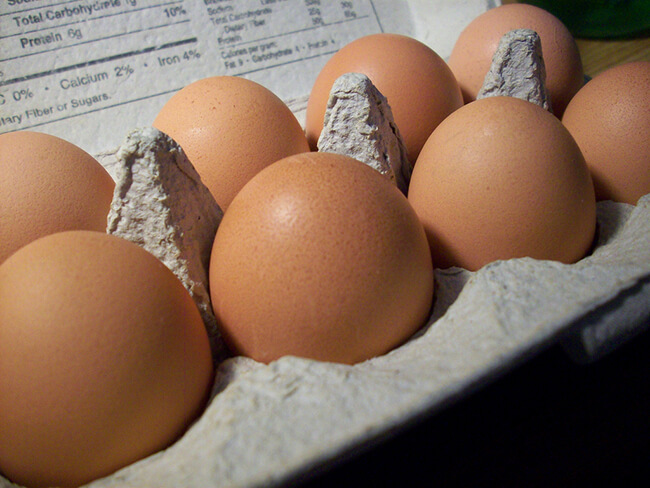
Cage free eggs
By choosing cage free eggs you would think that you’re buying healthy eggs from happy, free hens. But that’s unfortunately not the truth. This is a picture of what “cage free” means. Most chickens don’t even have access to the outside where they can eat bugs and get vitamin D from sunshine to make nutrient dense eggs. Their beaks are clipped making them unable to eat normally, they’re not given time to sleep or rest, and are horrifically abused.
Even worse, the packages boast that their hens are “vegetarian fed.” Chickens aren’t vegetarians, and these unhealthy grains, usually gmo corn and soy, make for equally unhealthy eggs. You can read more about deciphering egg labels here. I can’t afford to buy everything organic, but I do make it a priority in my grocery budget to buy healthy eggs and meat.
Buy this instead: It’s best to buy local, free range, organically fed eggs, but the next best option is organic, free range eggs from the store. Local is usually cheaper. I get mine from Kroger, wait until they go on sale for half price, then buy a bunch at once. You can get more of my tips for how I afford to feed my family organic and natural foods in this post here, and this one here.
Don’t feel bad if you’ve been fooled by shady marketing before. Just please, look past the fancy colors and enticing wording, and read the ingredients list. Look for whole, real foods and take it one step at a time.
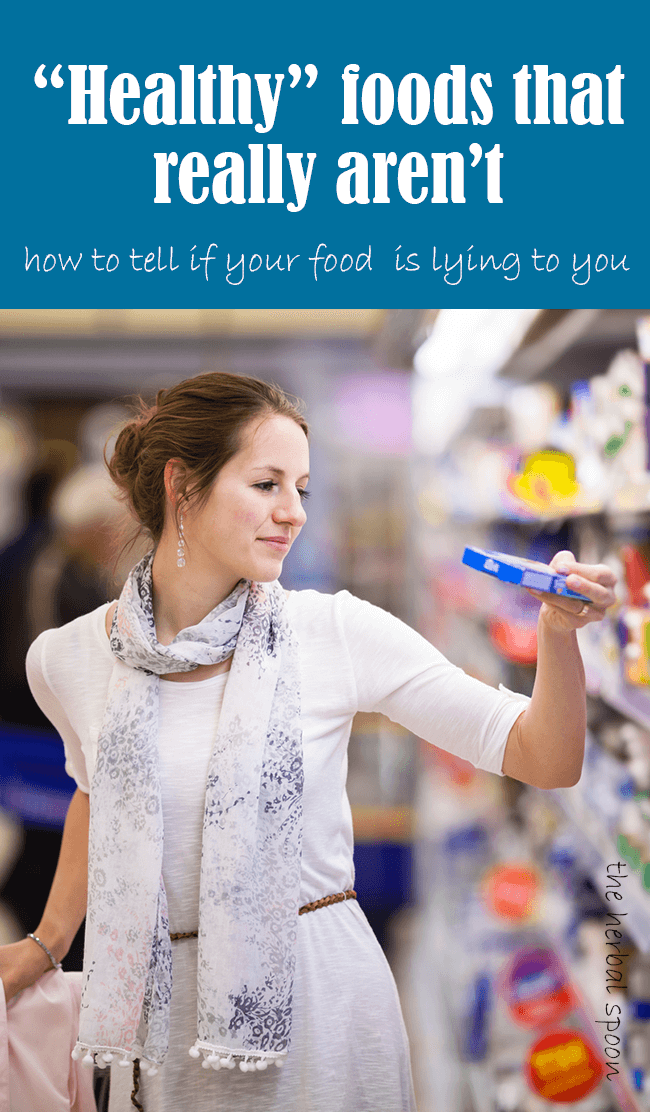

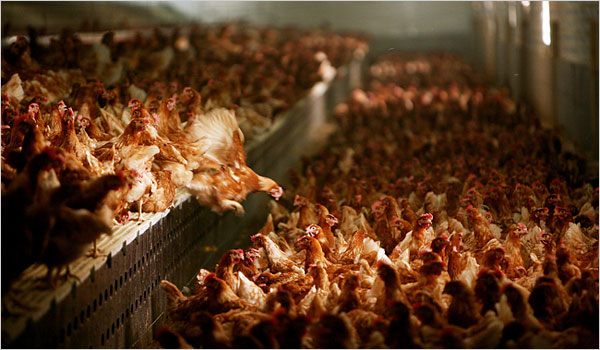
Jamie, you just covered a bunch of my pet peeves! Especially margarine — don’t get me started! Since I don’t even look at it, I had no idea that it’s now being called Non Dairy Butter — disgusting! I hope you’ll read my current post about sugar intake.
Thanks for these tips. Very insightful, especially for those with food intolerances! Those chickens being fed soy are wreaking havoc on those with soy allergies and it’s so hard to figure out. As the saying goes “it’s what you eat, and what you you eat eats!”